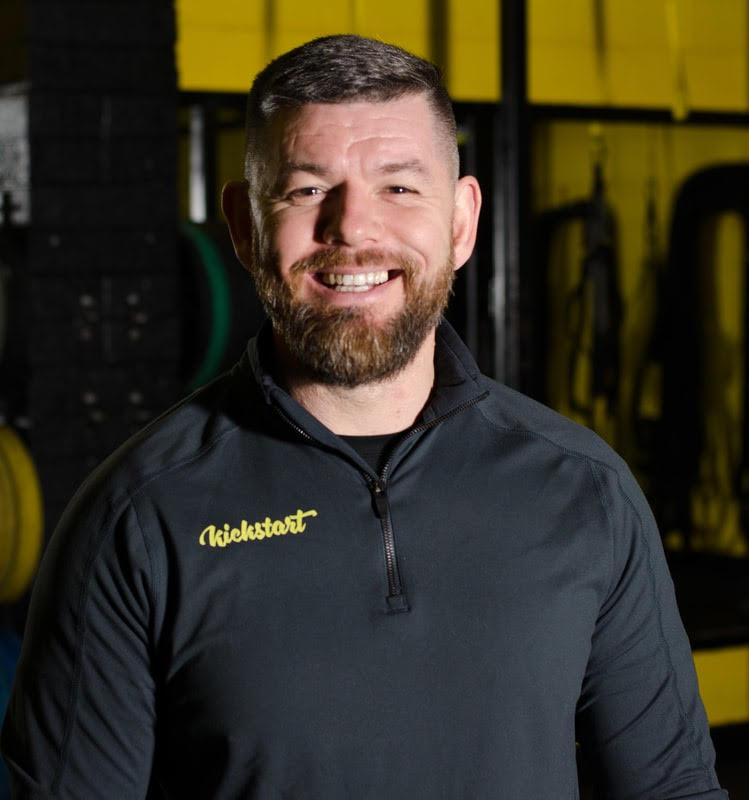Coach as Counselor Part 1 – How to Help Identify Your Athletes’ Mental Health Issues and What to Do Next
MindsetABOUT THE AUTHOR

Darren Dillon
Darren Dillon is the owner and director of Kickstart Fitness Ireland. Founded in 2010, Kickstart Fitness has grown from what was initially a bootcamp in a local park into what is now a center of excellence for TRX®️Training and functional training, and a high performance hub for strength and conditioning. Darren also serves as head of performance at Shamrock Rovers FC, working with and programming for the academy through to senior professional soccer players. He is also Ireland’s only official TRX®️ Master Trainer, delivering all the company’s education courses to the Irish fitness industry.
// mental health in athletics

“There’s so much depression in football,” England forward Jamie Vardy’s wife Rebekah recently told The Telegraph. “Because they’re men, because they’re in a changing room full of testosterone, it stays hidden. Men are so proud, they don’t like to talk, they don’t like to admit that they can’t cope. But every single player at every single club has a story and it doesn’t matter whether they’ve come through an academy or whether they’ve started at the bottom and worked their way up.”
“Every single player at every single club has a story and it doesn’t matter whether they’ve come through an academy or whether they’ve started at the bottom and worked their way up.”
As someone who works with professional soccer players day in and day out, I applaud Rebekah’s candor. And as a gym owner who also coaches “weekend warriors” at my facility in Dublin, I can also say with certainty that mental health issues pervade not just the pro ranks, but also the lives of everyday folks like me. Perhaps some trainers wish that all they did was write programs, execute them, and teach on the coaching floor. While I do enjoy these three things, I’m glad that my role, my life’s work, is so much deeper than that. More demanding, certainly, but also far more rewarding. That’s because I don’t just deal in training inputs and physical improvement outputs. I’m also concerned about the mental and spiritual wellbeing of each and every person who walks through my doors, whether that’s at Shamrock Rovers or Kickstart Fitness.
As part of this generalist job description, I have a responsibility to my clients to keep tabs on their mental health and, when I see some warning signs, to intervene and get them the help they so desperately need. I cannot in all good conscience let anyone go on suffering in silence. And believe me, there are plenty who are struggling emotionally. The Mental Health Foundation believes that up to 1 in 6 people struggle with a mental health issue. And yet 81 percent of Irish people polled by a recent survey believe that there’s still a stigma attached to airing such challenges, suggesting that all too of us try to shove our problems deep down inside, ignore them, or mask them from the outside world. In this sense, the real F word is “(I’m doing) fine.”

There’s always a lot going on inside everybody’s head. Much of it you cannot see, but some things do manifest themselves physically. When I’m walking around the gym, I’m not interested in checking someone’s body fat or weighing them right away. Instead, I want to check in and see how their life is going. If I notice that there’s been a change in their body language, a dip in performance, or flagging energy and productivity, I’ll view this as a sign that something isn’t quite right (the same goes for my coaching staff). So I’ll call out what I see, and then ask them, “On a scale of one to 10, how are you doing today?” Maybe they give me a wry smile and reply, “Six.” Or perhaps they fail to meet my eye, look down, and say, “I don’t know.”
In the first instance, I’ll follow up with, “What can we do to get that to a nine or 10?” With the person who looks away and doesn’t want to engage, I’ll go with, “I’d love to know what’s going on and how I can help. Would you like to go for a coffee?” Because I’ve shown that I’m more interested in what they’re feeling than how much they’re bench pressing or squatting, this approach typically illicits a positive and candid response. When I offer to grab a drink together, quite often they take me up on the offer. If they’re more reticent and reluctant to share what’s bothering them, I send them a text the next day: “Hey INSERT NAME. Just thinking about you and checking to make sure you’re OK. Let me know if I can do anything for you.”
When I do actually meet a client at a coffee shop for a chat, I again take the lead in setting a tone of openness, appropriate disclosure, and teamwork. My goal is to let the other person know that I’m here for them, that I won’t judge their circumstances, and if their issue is too big for me to solve (after all, I’m a coach, not a licensed psychologist or psychiatrist), I’ll refer them to someone who can. First, I offer up a little bit about me and my background, so they feel like they know me as more than just the guy who tells them to jump higher or run faster three nights a week, but rather a regular bloke who is just as imperfect and vulnerable as anyone else.
Next, I reiterate what I noticed in the gym: that they weren’t putting in their usual effort or that their shoulders were slumped (a 101-level indicator of depression). Whether they realized it or not, I could tell that they were a bit down in some way. They might believe that they’re keeping everything together or toughing a situation out, but I noticed that they were having a hard time from their body language, performance, or mood. So now I ask them again, “How are you doing?” By this time, they hopefully feel safe with me, and so usually give a frank answer. Maybe their marriage is on the rocks, they got fired, or one of their kids is being bullied. This is a crucial moment in the conversation, because most of the time when we’re listening we are simply seeking the next opportunity to talk. That’s going to be completely counterproductive here. What I do instead is listen actively and intently, making mental notes about what they’re saying as I allow them to keep going. If they talk for 20 or 30 minutes then all the better. That means we’re getting to the heart of the matter. The first time I speak again is when I’m sure they’re completely done.
At that point, I try to again create a team mentality by asking, “How can we do something to help here?” This shows that they’ve finally found someone who’s willing to share the load of whatever burden they’ve been bearing, perhaps for years. Maybe what they require is just a new friend who’ll offer a listening ear anytime it’s needed. I’m in. But if it’s a more serious issue or they’re having suicidal thoughts, this is outside of my purview and I need someone else to come alongside us. So I’ll say, “That isn’t my area of expertise, but I have this friend, Sarah [I made the name up to protect confidentiality], who’s a therapist. I’ve known her for years and think she can help you. Are you OK with me connecting the two of you?” Then I offer to be present at the meeting if it’d make them feel more comfortable, or if they want to keep it private I suggest driving them to the appointment, waiting in my car, and then taking them home afterwards.

Somewhere along the way, many of us have been hurt, disrespected, abused, discarded, or betrayed. Me too. As a result, a lot of the clients I take out for coffee in my role of coach-as-counselor have seen the darkness in people. While they’ve been wounded by this, it has also made them into very shrewd judges of character.
When I initially ask athletes how they’re doing, they might well be suspicious. But once I show them over and over again that I genuinely care about them and want to help, they usually let down their guard a bit and start to share what’s been going on inside their head and heart. From that point, I can begin to help them work through their problems, bringing in a mental health professional as needed without ever betraying their confidence or sharing what we’ve talked about unless I fear for their life.
My gym is a microcosm of society, yet it’s not the most glaring example of the issue I’m writing about here. That’d be the homeless on the streets of Dublin. Rather than just putting my head down and picking up my pace to get past someone who looks disheveled, I go out of my way to talk with them. This isn’t difficult at all: I just ask, “What’s your name?” So many homeless people have been unnamed and lost their identity as society has cast them aside and everyone who used to be in their life has given up on them. Maybe they’ve given up on themselves, too. By being able to call them by name, I can remind them that they’re a valid person. Instead of just handing out money, I usually go into a shop and buy them a cup of tea or something to eat. Next, I’ll inquire how long they’ve been on the streets. Then I’ll suggest that they visit a couple of local shelters or churches that have homeless ministries. I’ll also mention some groups that might be able to help them start putting the broken pieces back together. This interaction is a small act of random kindness, but it can have a big impact. It could well be the first time that day that someone hasn’t looked at this person like they’re nothing. By treating them like they’re somebody, I can start to change how they view themselves. I’m not some crusader who’s trying to change the world, because I can’t. But what I certainly can do is treat others with the dignity, respect, and love they deserve, whether that’s on the gym floor, at a coffee shop, or on a busy sidewalk.
Are you a better coach after reading this?
More coaches and athletes than ever are reading the TrainHeroic blog, and it’s our mission to support them with usefull training & coaching content. If you found this article useful, please take a moment to share it on social media, engage with the author, and link to this article on your own blog or any forums you post on.
Be Your Best,
TrainHeroic Content Team
HEROIC SOCIAL
HEROIC SOCIAL
TRAINING LAB
Access the latest articles, reviews, and case studies from the top strength and conditioning minds in the TH Training Lab


